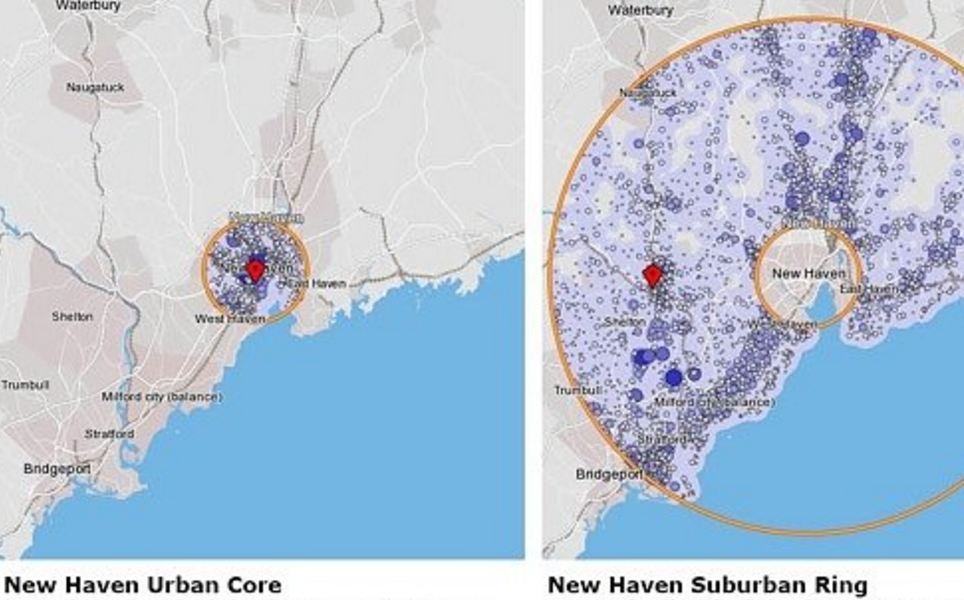In last 35 years, a significant drop in middle-income neighborhoods
Trend CT June 17, 2015
[Excerpt] From 1980 to 2013, the percentage of Connecticut residents living in neighborhoods of concentrated wealth or poverty grew by 30 percent, according to a new analysis from DataHaven.… Read More
Immigrant owned-businesses help shape local economy, communities in Greater New Haven
New Haven Register May 2, 2015
[Excerpt] "According to the study published this year, Connecticut has a foreign-born population of 481,880, which represents 14 percent of the state’s 3.6 million residents. There are 74,670 foreign-born people living in Greater New Haven. The figure is based on numbers from the 2008-12 American Community Survey’s five-year estimates.… Read More
New Haven, Hartford Gain Jobs Over Burbs
Hartford Courant March 4, 2015
[Excerpt] After decades of suburban sprawl, a new report shows that more jobs — and better, higher-paying jobs — are flocking to our nation's cities, even as peripheral areas see their job base erode. Here in Connecticut, employment growth in dense city centers like New Haven and Hartford is once again driving our state's overall economic vitality.… Read More
Jobs Are Returning To The City
New Haven Independent February 27, 2015
[Excerpt] In recent years, job growth in downtown centers nationwide has far outpaced growth in surrounding suburban areas, according to a widely-cited report released this week by the City Observatory. According to a DataHaven analysis of the Census dataset used in the report, New Haven and Hartford are experiencing a similar shift.… Read More
Report: Transit’s Not Keeping Up With “Job Sprawl”
New Haven Independent January 18, 2015
[Excerpt] The jobs are out in the suburbs. The workers live in the city. The bus often can’t connect the two.… Read More
Report: Lack of transportation in Greater New Haven keeps people out of workforce
New Haven Register January 16, 2015
[Excerpt] According to the report, New Haven has been adding high-paying jobs since 2000 that go primarily to college graduates, and only 4 percent of 47,000 jobs paying more than $20 per hour are held by residents of the city’s low-income neighborhoods. Most of the living-wage jobs in New Haven — 81 percent — are held by out-of-towners. SCRCOG Executive Director Carl Amento called the problem “this mismatch between where the jobs are and where the people are.” … Read More







